Sachet Packaging Size
Market Size Snapshot
| Year | Value |
|---|---|
| 2025 | USD 10.61 Billion |
| 2034 | USD 17.48 Billion |
| CAGR (2025-2034) | 5.7 % |
Note – Market size depicts the revenue generated over the financial year
The sachet market is expected to grow significantly. The sachet market is projected to reach $10.6 billion in 2025, and to reach $17.4 billion by 2034. This is a compound annual growth rate (CAGR) of 5.7% during the forecast period. The increasing demand for convenient and portion-controlled packaging solutions in various industries, such as food and beverage, personal care and pharmaceuticals, is the main driving force behind this market growth. The convenience and hygiene advantages of single-use packaging are gaining ground among consumers. The development of new materials and manufacturing processes is also contributing to the growth of the market. In the coming years, biodegradable and recyclate-able materials are expected to be used in the sachet industry. Several companies, such as Amcor, Sealed Air, Mondi and others, are investing heavily in research and development to meet changing customer preferences. Strategic initiatives, such as acquisitions, collaborations and joint ventures, are also a sign of the dynamic nature of the market.
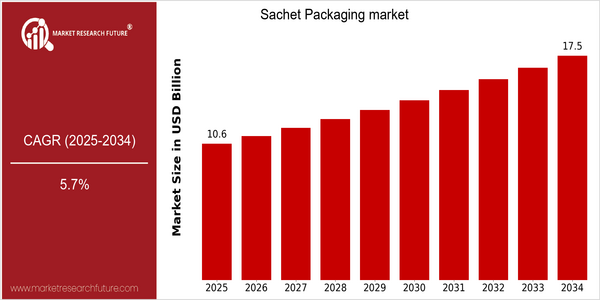
Regional Market Size
Regional Deep Dive
Across all regions, the sachet packaging market is experiencing significant growth, driven by rising consumer demand for convenience, portion control, and product freshness. North America is characterized by a strong focus on innovation and sustainability, while Europe is characterized by a strong regulatory focus and a focus on eco-friendly materials. The Asia-Pacific region is characterized by a growing middle class and increasing urbanization, which is driving the use of sachets in the food, personal care, and pharmaceutical industries. The Middle East and Africa are experiencing strong growth in e-commerce and retail expansion, which is driving the market, while Latin America is adapting to local preferences and economic conditions, which is influencing the design and materials used in the packaging.
Europe
- The European Union's stringent regulations on single-use plastics are pushing companies to innovate in biodegradable and recyclable sachet materials, with firms like Unilever leading the charge in sustainable packaging solutions.
- There is a growing trend towards personalization in sachet packaging, with brands like Nestlé experimenting with customized sachets for their products to cater to diverse consumer preferences across different countries.
Asia Pacific
- Rapid urbanization and a burgeoning middle class in countries like India and China are driving demand for sachet packaging, particularly in the food and beverage sector, with local companies like ITC Limited capitalizing on this trend.
- Innovations in smart packaging technology are emerging, with companies like Amcor developing sachets that incorporate QR codes for enhanced consumer engagement and product information.
Latin America
- Cultural preferences for single-serve products are driving the sachet packaging market, with companies like Grupo Bimbo adapting their packaging strategies to meet local consumer demands for convenience.
- Economic fluctuations in the region are influencing packaging costs, leading manufacturers to explore cost-effective materials and designs that cater to budget-conscious consumers.
North America
- The rise of e-commerce has led to increased demand for sachet packaging, particularly in the beauty and personal care sectors, with companies like Procter & Gamble investing in innovative sachet designs to enhance user experience.
- Sustainability initiatives are gaining traction, with organizations such as the Sustainable Packaging Coalition advocating for the use of biodegradable materials in sachet packaging, influencing manufacturers to adopt greener practices.
Middle East And Africa
- The expansion of retail and e-commerce platforms in the region is increasing the demand for sachet packaging, with companies like Al Haramain Perfumes utilizing sachets for their fragrance samples to attract online shoppers.
- Government initiatives aimed at reducing plastic waste are prompting manufacturers to explore alternative materials for sachet packaging, with local startups focusing on eco-friendly solutions.
Did You Know?
“Sachet packaging can reduce food waste by up to 30% by providing single-serving portions that help consumers use only what they need.” — Food Packaging Forum
Segmental Market Size
Among the many kinds of packaging, the sachet plays an important part, and is used mainly in the food and consumer goods industries. The sachet is currently growing, driven by a higher demand for convenience and portion control. The rise of the on-the-go lifestyle and the demand for smaller, single-use packaging which reduces the waste generated are the main factors driving this trend. The increasing regulatory pressure to implement sustainable packaging solutions is also influencing manufacturers to adopt sachet formats that have a lower impact on the environment. The sachet is now well established, with companies such as Unilever and Procter & Gamble using sachets for personal care and household products in emerging markets. The most common uses are for food seasonings, personal care and pharmaceutical products, where the sachet offers a convenient and precise dose. The shift to e-commerce and the move towards sustainable solutions are accelerating the growth, and consumers are increasingly demanding more sustainable packaging solutions. Biodegradable materials and new sealing methods are shaping the development of sachets and enabling them to meet the expectations of both consumers and regulatory requirements.
Future Outlook
In 2025, the global sachet packaging market is expected to grow from $ 10.5 billion to $17.48 billion, a robust CAGR of 5.7%. The growth is driven by the increasing demand for convenient and sanitary packaging solutions in various industries such as food and beverages, cosmetics and pharmaceuticals. The trend towards single-use products will continue, especially in emerging economies where urbanization and changing lifestyles will increase the demand for disposable packaging. In addition, the development of new packaging materials will play an important role in the future of sachets. Biodegradable and recyclable films are expected to grow as consumers and manufacturers increasingly focus on sustainable development. Also, the integration of smart packaging technology such as NFC and QR codes will increase the interaction between consumers and brands and provide valuable insights. The trend towards eco-friendly sachets will be driven by government policies to reduce plastic waste. In summary, the combination of changing consumption habits, technological developments and favorable regulatory policies will create a dynamic environment for the sachet market in the next ten years.
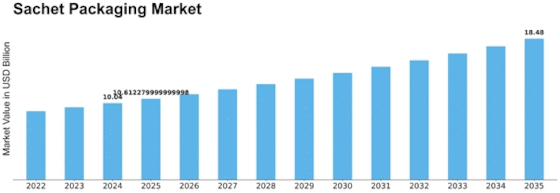

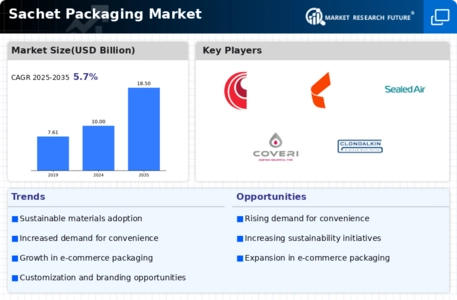

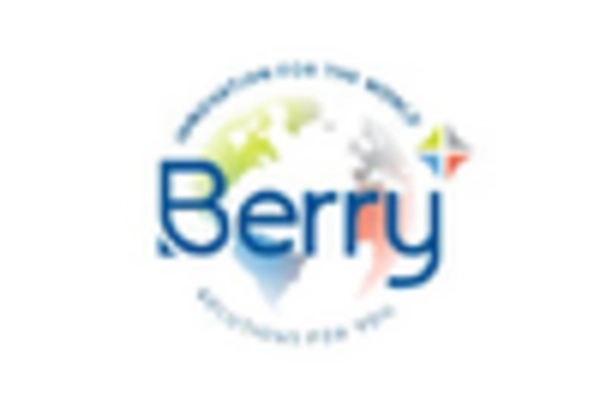
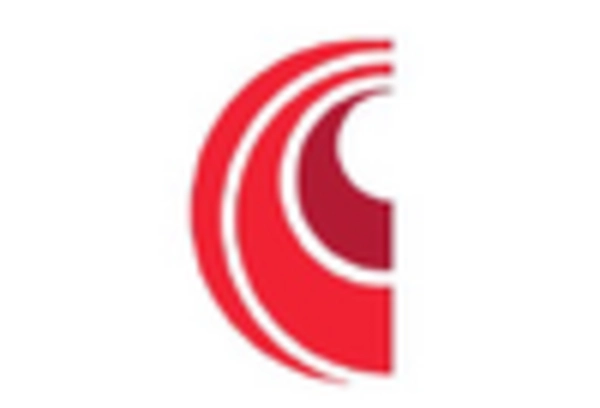

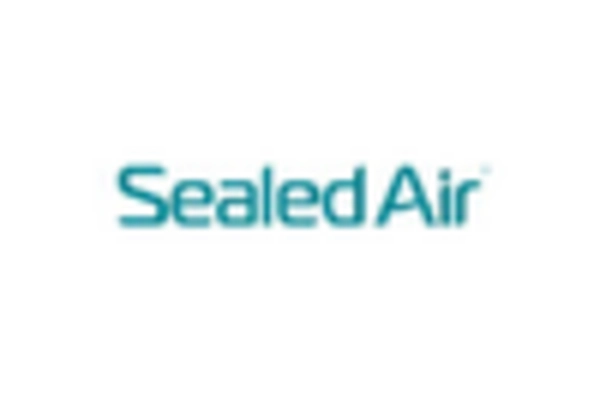
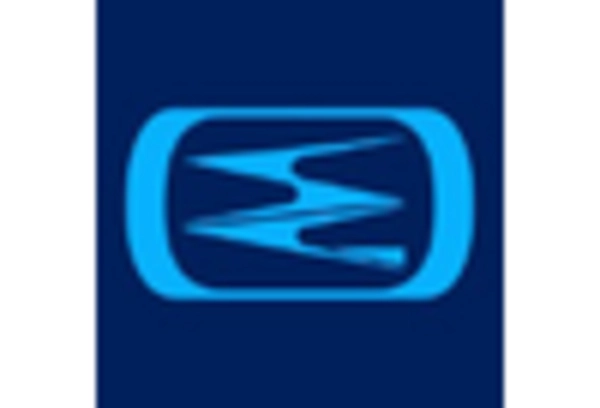









Leave a Comment